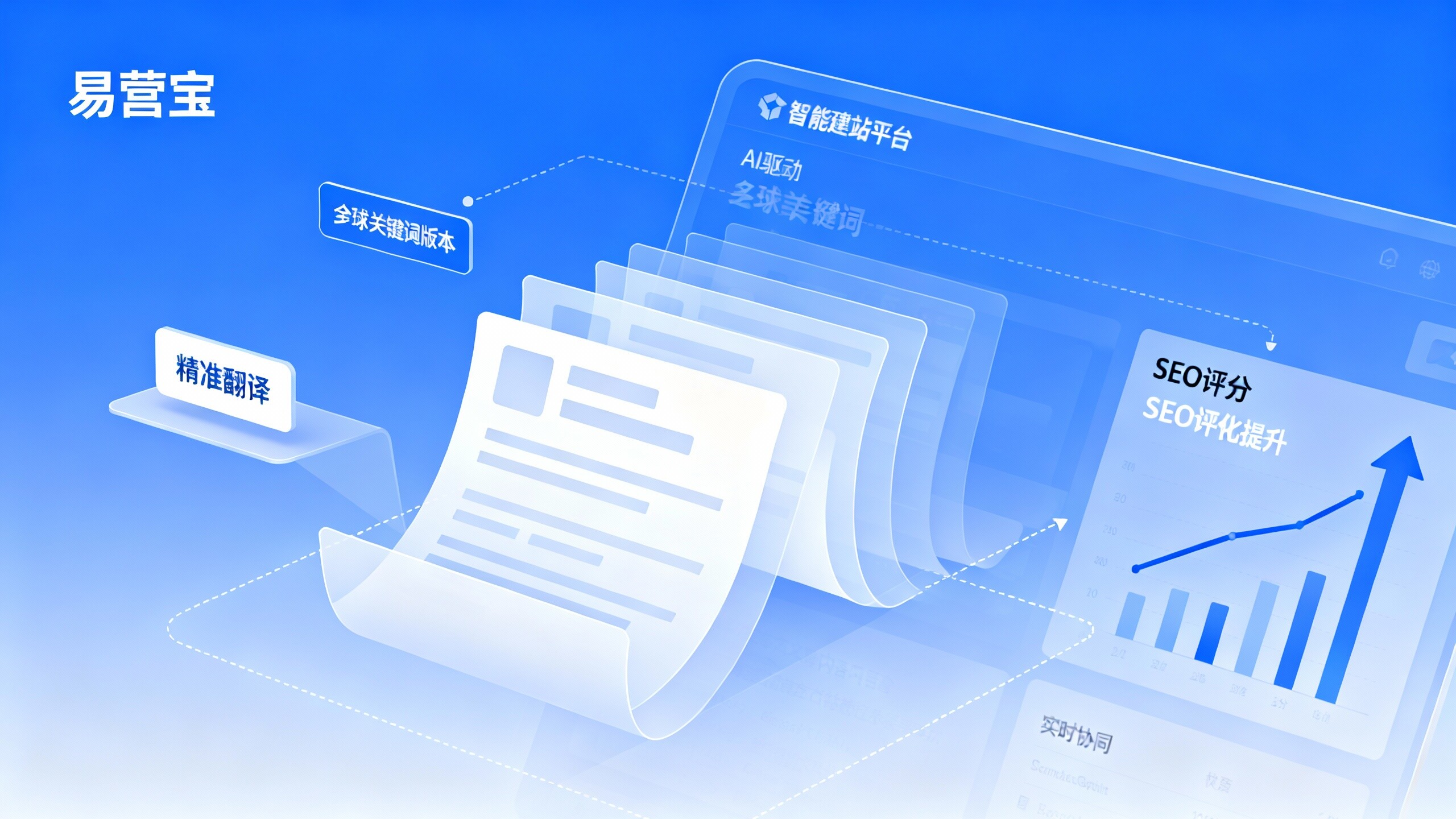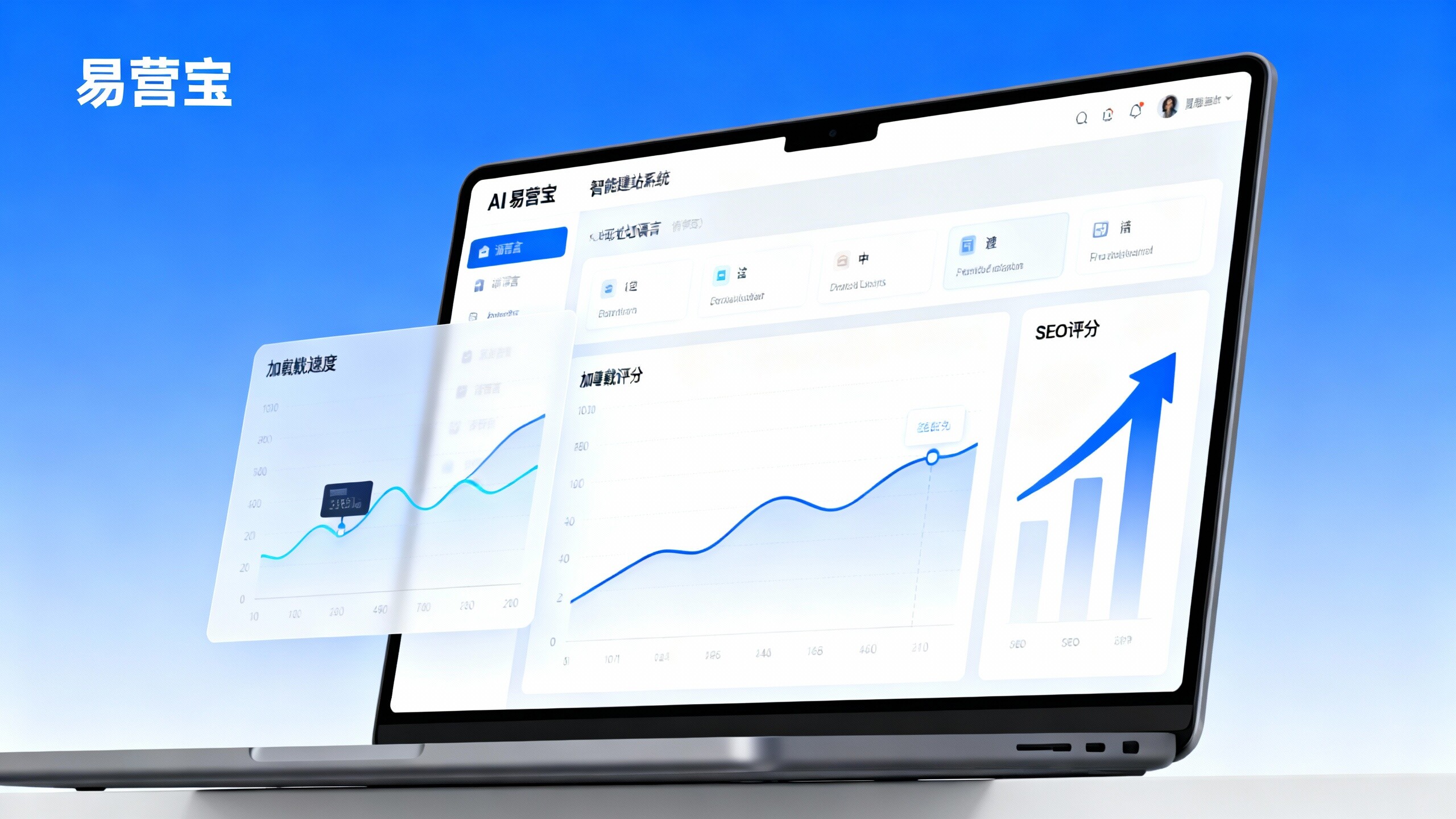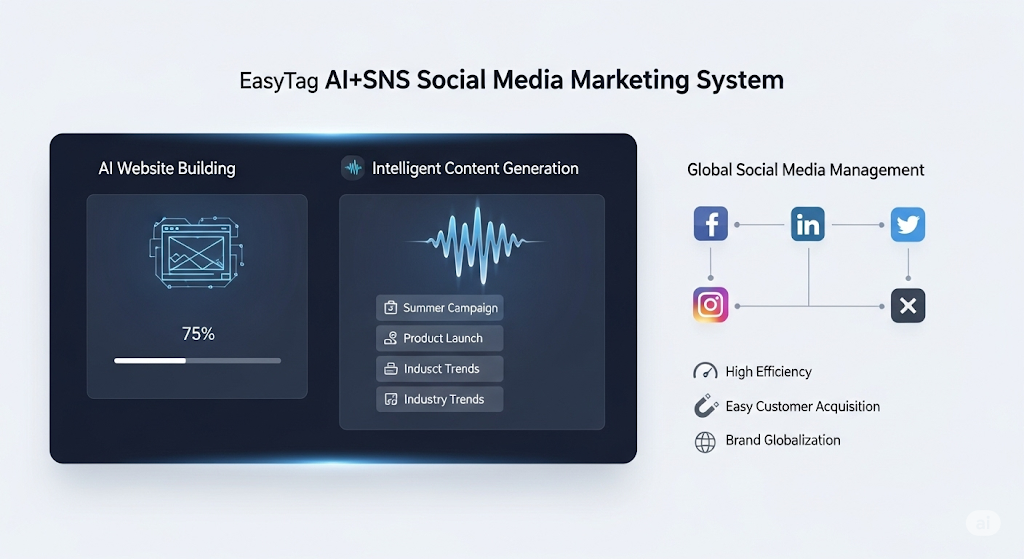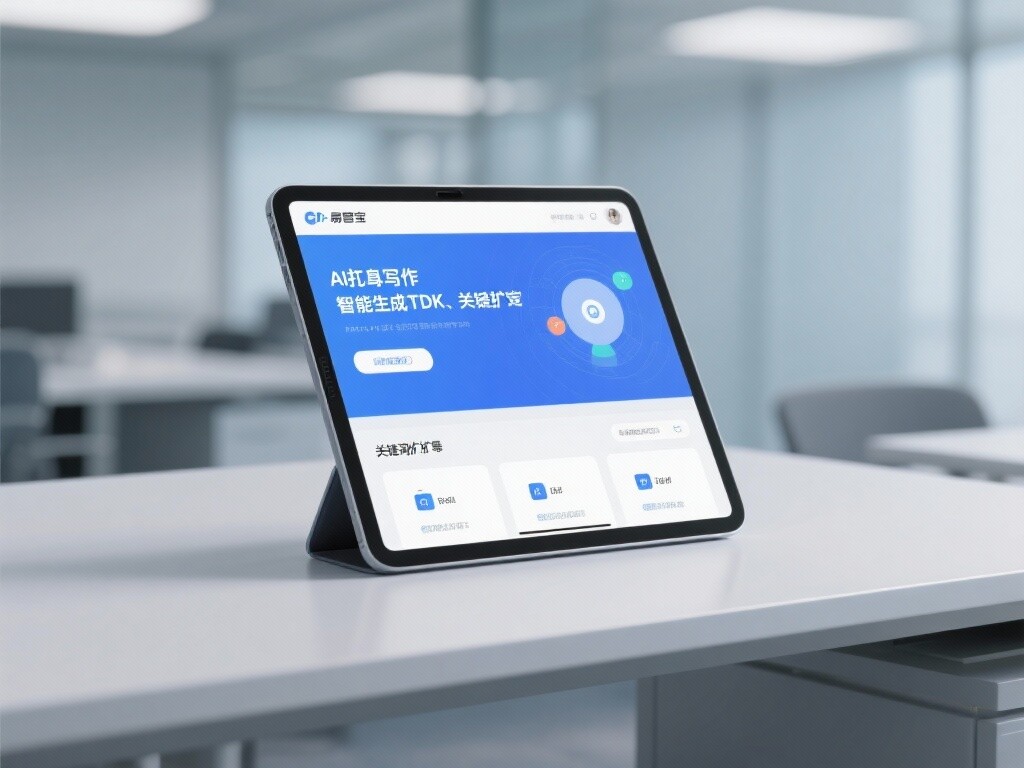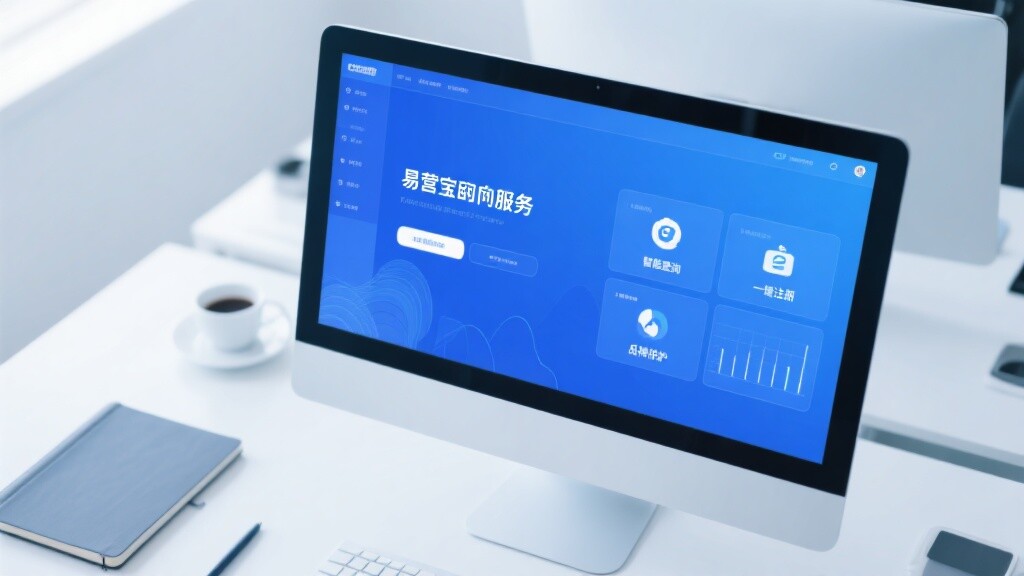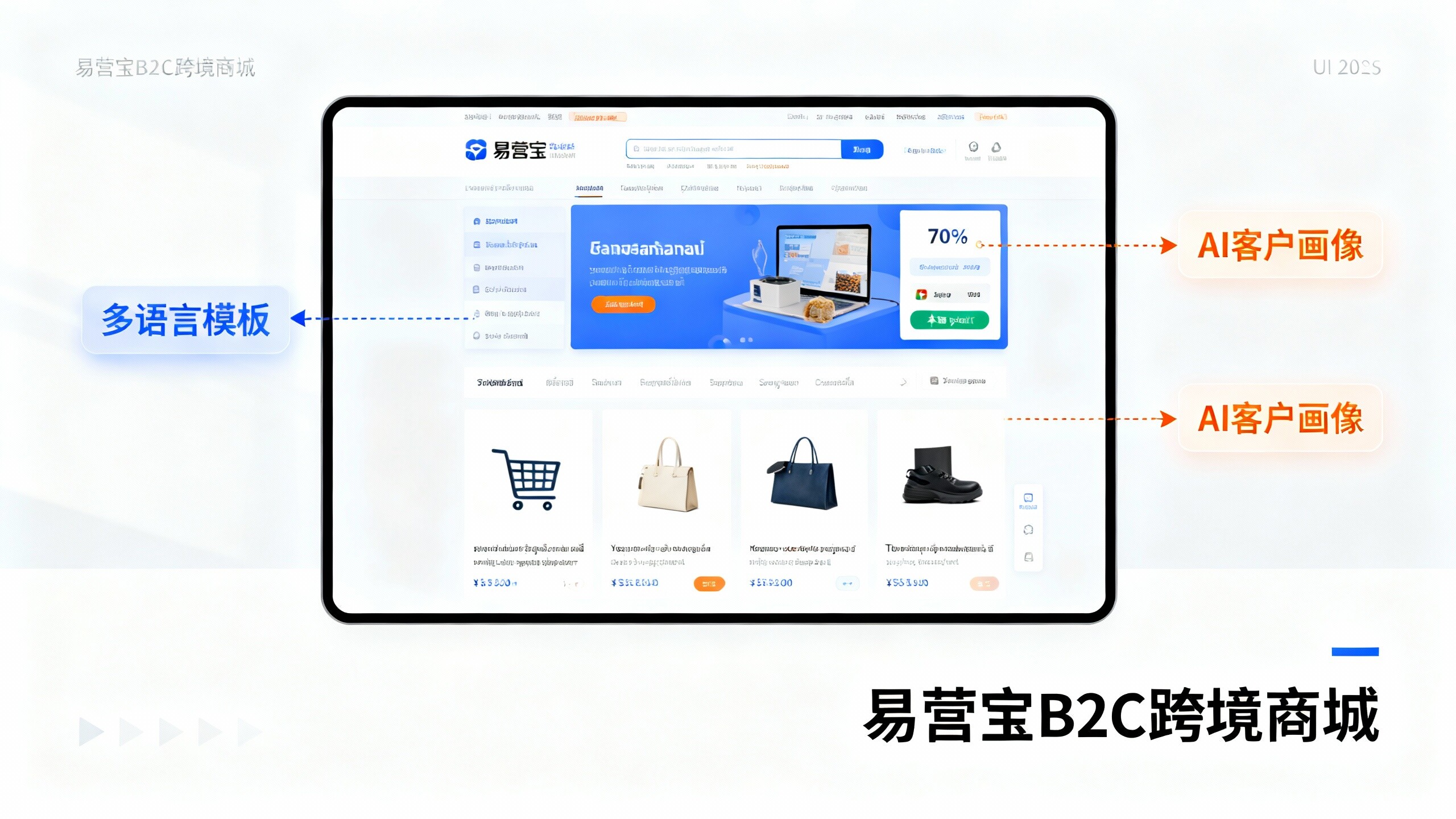- Smart Website Industry Analysis: 2024 B2B Market Trends and Selection Guide2025-12-19View Details
- IDC SaaS Platform User Satisfaction Survey: Which Platform Offers the Most Considerate After-Sales Service?2025-12-19View Details
- Is the cost of building a foreign trade independent website high? How does the budget impact multilingual support for different languages?2025-12-19View Details
- How to Improve Inquiry Quality Through B2B Standalone Site Optimization + Multilingual Website in 2025: Google SEO Practical Methods2025-12-18View Details
- B2B Website Comparison: Facebook Marketing vs Google Advertising Which Improves Inquiry Quality and ROI2025-12-19View Details
- AI Advertising Platform Selection Guide: Cost, Effectiveness, and Platform Stability Comparison2025-12-19View Details
- From Website Building to Yandex Promotion: A Complete Online Growth Path for Foreign Trade Enterprises2025-12-18View Details
- Poor Yandex promotion results? Your foreign trade independent website may lack Russian SEO structure2025-12-18View Details
China and the United States photovoltaic game in Southeast Asia blocked, enterprise marketing and website construction how to break out?
The Sino-US photovoltaic trade war is spreading, Southeast Asia is in trouble, where will Chinese companies go? Can marketing promotion and website construction break the deadlock?
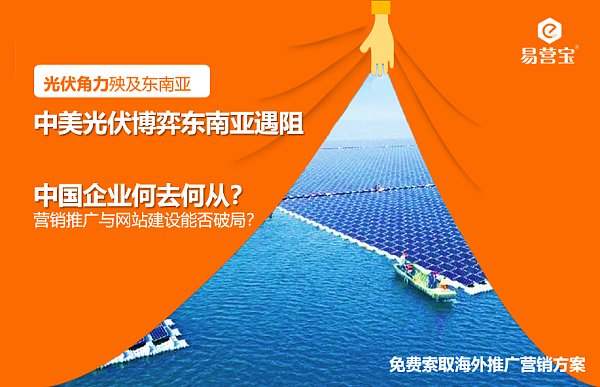
Sino-US photovoltaic trade dispute: current situation and background
At a time when the global energy landscape is undergoing profound changes, the photovoltaic industry should have been galloping on the road to success. However, the photovoltaic competition between China and the United States is like a haze that has ruthlessly enveloped the Southeast Asian region and brought many variables and challenges to the development of the entire photovoltaic industry.
On November 29, local time, the U.S. Department of Commerce made a preliminary ruling on the anti-dumping investigation of crystalline silicon photovoltaic cells in Cambodia, Malaysia, Thailand and Vietnam. The four countries will face an anti-dumping duty rate of up to 271.28%. The specific amount depends on the company, and the final ruling will not be announced until mid-2025. The U.S. Department of Commerce claims that Southeast Asian photovoltaic products are dumped in the United States at low prices, damaging the interests of local companies. But in fact, the United States is deeply dependent on Southeast Asian photovoltaic products. The taxation will not only fail to save the local industry, but will also increase the burden on importers and consumers. This is the second tax assessment by the United States on Southeast Asian photovoltaic products. The preliminary anti-subsidy ruling announced on October 1 was a tariff rate between 2.85% and 23.06%, which was lower than market expectations.

Review of Sino-US Photovoltaic Trade History
Looking back, after the United States imposed anti-dumping and countervailing duties on Chinese photovoltaic products in 2012, Chinese photovoltaic companies started their strategic transfer journey. Since 2014, investment in Southeast Asia has gradually expanded, and the market share of Chinese photovoltaic products in the United States has continued to decline. Especially under the impact of the Trump administration's trade investigation in 2018, China's exports of photovoltaic modules to the United States fell sharply by 90% year-on-year. Last year, China's photovoltaic module exports to the United States accounted for a negligible proportion, while Southeast Asia accounted for 82% of US module imports. After the four Southeast Asian countries became the "transit station" for China's photovoltaic products to be exported to the United States, the US tariff stick will fall sooner or later. This round of tariff actions in the United States began in April 2021, when the US Solar Manufacturing Trade Committee petitioned for an anti-circumvention investigation on photovoltaic products from four Southeast Asian countries. It was officially launched in March 2022, and later due to insufficient local production capacity, the Biden administration granted a two-year tariff exemption. In April 2024, it applied for anti-dumping and countervailing investigation again and was approved, until the initial anti-dumping and countervailing ruling was made in October and November. It is worth noting that the final ruling will be made by the Trump administration, whose tough trade stance may lead to higher tariffs and stronger trade barriers.
Response measures of Chinese photovoltaic enterprises
Chinese photovoltaic companies are not unprepared in the face of US tariff actions. Shanghai Nonferrous Network analysis pointed out that since the end of the double-anti-dumping exemption window in June 2024, Chinese companies' component production capacity in Southeast Asia has been gradually prepared to shut down. Most of the current production capacity is stagnant, relying only on inventory components to maintain external sales. At the same time, Chinese photovoltaic companies are actively seeking new ways out, and the direction of capacity transfer has gradually shifted to countries such as Indonesia and Laos. In July this year, Sungrow Power Supply, JinkoSolar, and TCL Zhonghuan announced their investment plans in Saudi Arabia, and the Middle East has become a new hot spot for Chinese companies to invest. In addition, seven Chinese photovoltaic companies, including Longi Green Energy, JinkoSolar, and JA Solar, have invested in capacity projects in the United States. People related to JA Solar said that if the US anti-dumping tariff on photovoltaic cells in the four Southeast Asian countries is too high, they can circumvent tariffs by shipping from US component factories.
Why Chinese companies stick to the U.S. market
Chinese companies stick to the US market, on the one hand because of the huge attraction of the United States as the world's second largest photovoltaic market, and on the other hand because of the severe situation of overcapacity in the domestic photovoltaic market. Since the "3060" goal was proposed, the photovoltaic industry has been very popular, and cross-border companies have flocked in. The number of photovoltaic companies has soared from 115,400 in 2021 to 884,700 in 2022. Capacity expansion is like a wild horse running away, and the scale of production capacity in 2023 exceeds market demand by nearly one-fold. Since the beginning of 2023, the prices of products in the main photovoltaic industry chain have been falling all the way, with the price of photovoltaic modules falling by about 49% throughout the year, and the price of polysilicon falling by 67%. The industry is caught in a quagmire of price wars and vicious competition, and the financial report data is terrible. In the first three quarters of 2024, the operating income of 72 major A-share photovoltaic companies fell by 19.70% year-on-year, and the net profit fell by 91.94% year-on-year. Taking JinkoSolar and Longi Green Energy as examples, JinkoSolar's net profit plummeted by 99.4% in the third quarter and fell by 80.9% in the first three quarters; Longi Green Energy's net profit in the first three quarters turned from profit to loss. Against this background, the US market is like a treasure that is full of thorns but difficult to give up for Chinese photovoltaic manufacturers. According to the Grand View Research report, by 2030, the total installed capacity of photovoltaic power generation in the United States will increase from 33GW in 2023 to 377GW, and the scale of the solar photovoltaic market is expected to reach US$96.6 billion, with a compound annual growth rate of 13.7% from 2023 to 2030. Although Trump's coming to power has made the prospects of the photovoltaic market confusing, and the key subsidies of the Biden administration's "Inflation Reduction Act" are at risk of cancellation, the US market is still a place that Chinese photovoltaic companies are determined to win.
Photovoltaic foreign trade marketing promotion strategy
Under such a complex international photovoltaic trade pattern, photovoltaic foreign trade marketing and promotion is particularly important. For photovoltaic foreign trade marketing and promotion, enterprises first need to accurately locate the target market. In view of the particularity of the US market and the rise of other emerging markets, enterprises cannot limit their sights to the United States. For example, in Europe, with the growing demand for renewable energy, its photovoltaic market also has huge potential. Enterprises can participate in international photovoltaic exhibitions, such as the Munich International Solar Technology Expo in Germany, to showcase the advantages and innovative technologies of their products and increase brand awareness. At the same time, use social media platforms for online promotion, publish product use cases, technological breakthroughs and other content to attract the attention of potential customers around the world. In Southeast Asia, despite the pressure of US tariffs, local energy demand is also gradually increasing. Enterprises can cooperate with local companies to jointly develop photovoltaic solutions suitable for the local market to consolidate their market share in Southeast Asia.
Key points for building a multilingual website
In terms of multilingual website construction, since photovoltaic companies' target customers are all over the world, multilingual websites are a key to opening up the international market. First of all, the design of the website should conform to the aesthetic habits and cultural characteristics of different countries and regions. For example, Europe and the United States prefer simple and elegant design styles, while some Asian countries may prefer colorful and detailed page layouts. Secondly, the website content should be accurately translated to ensure the accuracy and consistency of product information, technical parameters, etc. in different language versions. For customers in different language regions, set up a dedicated customer service team or online customer service function to answer customers' questions in a timely manner. In addition, optimize the website's search engine optimization (SEO) strategy, optimize keywords in different languages, improve the website's ranking in search engines in different countries and regions, and increase the website's traffic and exposure.
Industry Outlook and Expectations
In short, the Sino-US photovoltaic competition has brought a huge impact on the entire industry, but it has also prompted Chinese photovoltaic companies to actively seek transformation and innovation. Through reasonable foreign trade marketing and promotion strategies and perfect multilingual website construction solutions, Chinese photovoltaic companies are expected to stand out in the fierce competition in the global photovoltaic market and open up a new world. While responding to trade challenges, they can achieve their own sustainable development and optimize and upgrade their global layout. In the future, how will the pattern of the photovoltaic industry evolve, and whether Chinese companies can write a brilliant chapter in this global game, let us wait and see.
If you have any questions about the construction and operation of foreign trade websites, please contact Yiyingbao technical customer service WeChat: Ieyingbao18661939702, and the staff will answer you wholeheartedly!

The picture resources are from the Internet. If there is any infringement, please contact 400-655-2477.
Related articles
 Smart Website Industry Analysis: 2024 B2B Market Trends and Selection Guide
Smart Website Industry Analysis: 2024 B2B Market Trends and Selection Guide IDC SaaS Platform User Satisfaction Survey: Which Platform Offers the Most Considerate After-Sales Service?
IDC SaaS Platform User Satisfaction Survey: Which Platform Offers the Most Considerate After-Sales Service? Is the cost of building a foreign trade independent website high? How does the budget impact multilingual support for different languages?
Is the cost of building a foreign trade independent website high? How does the budget impact multilingual support for different languages?
Related products

